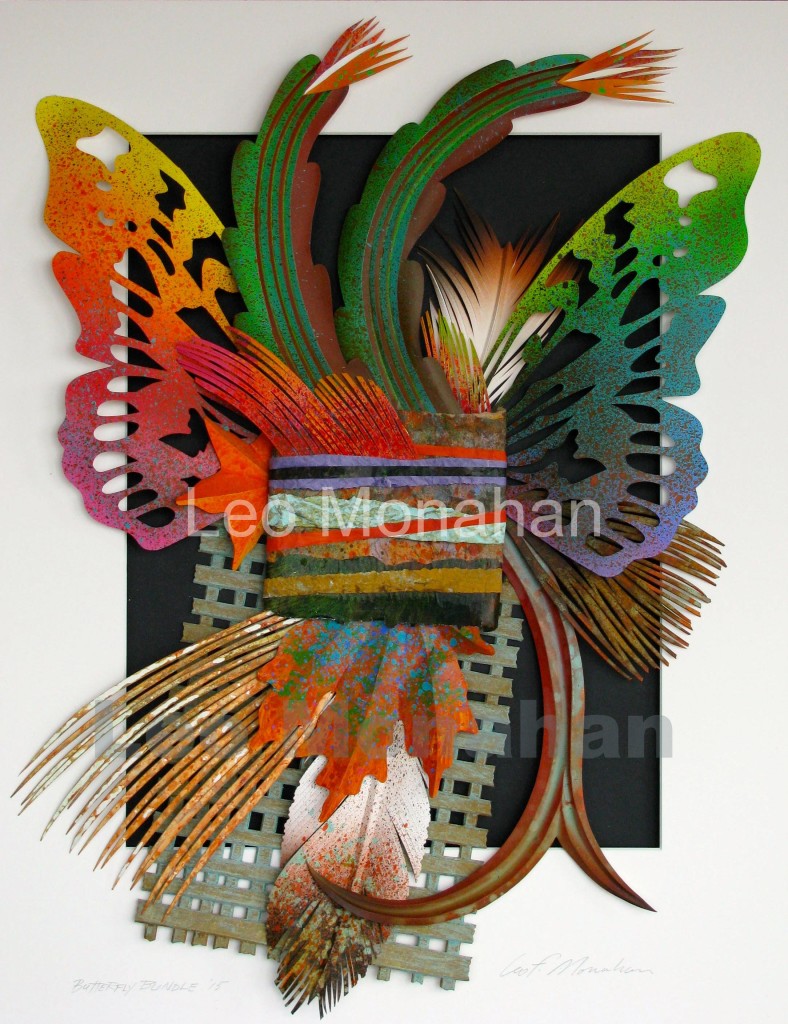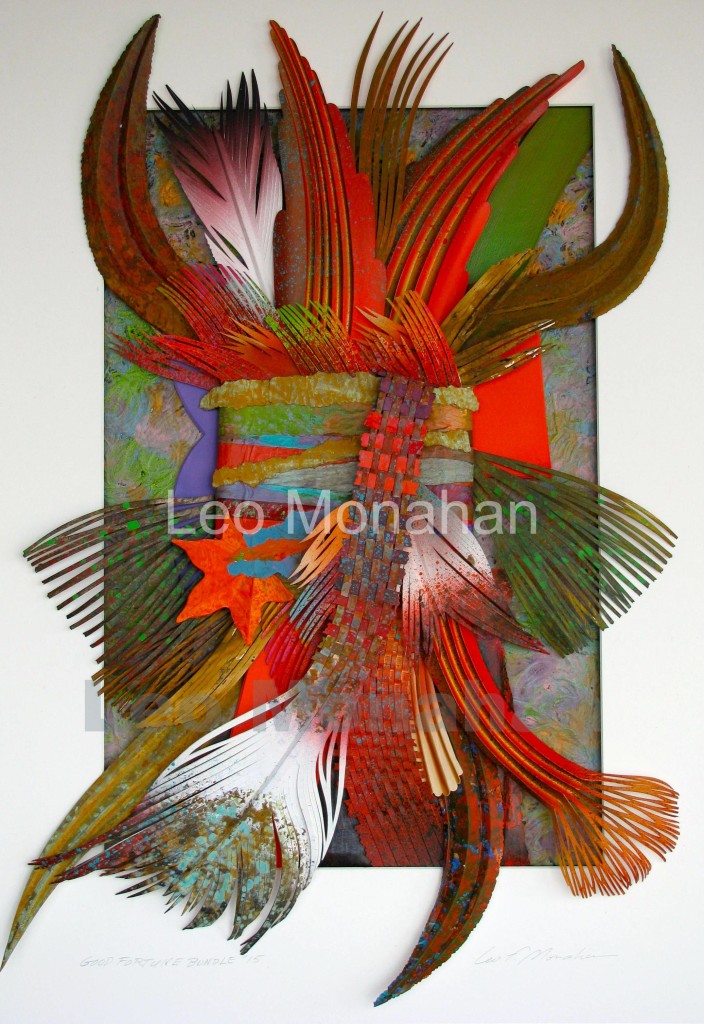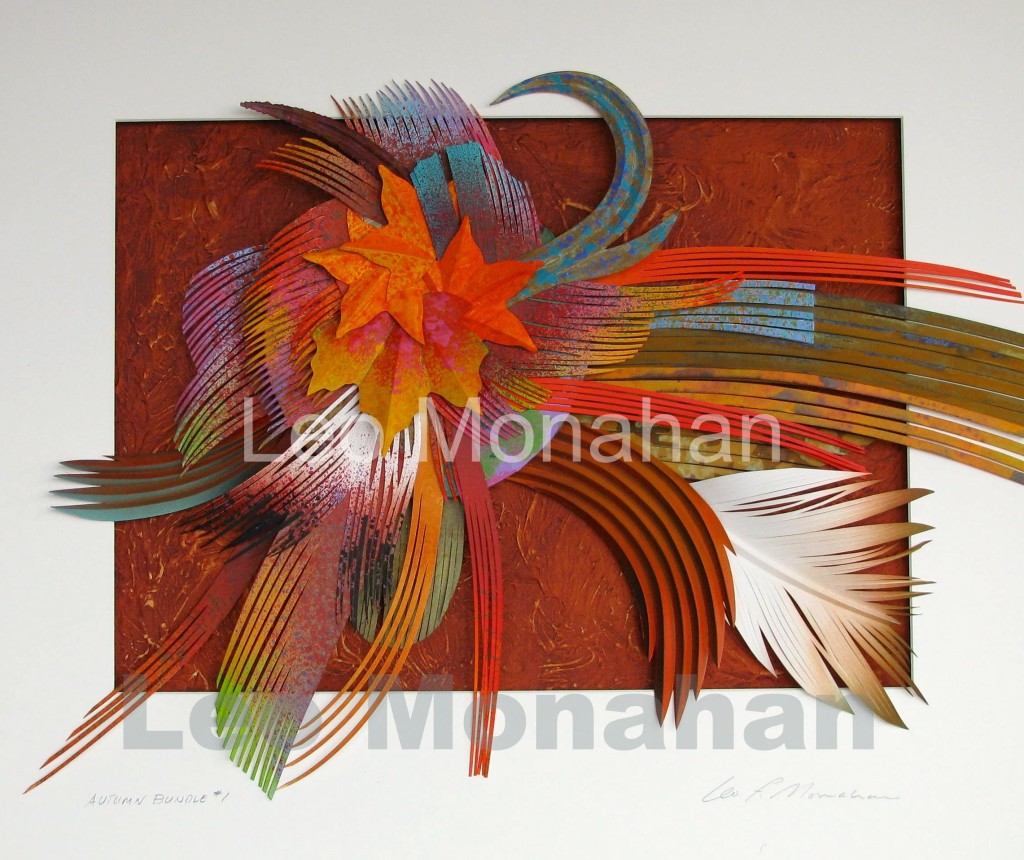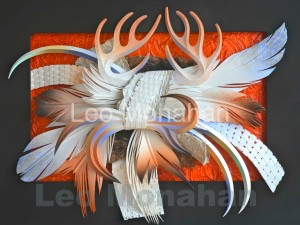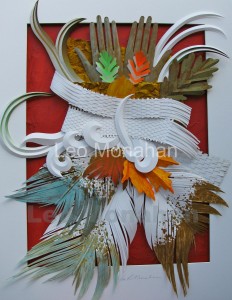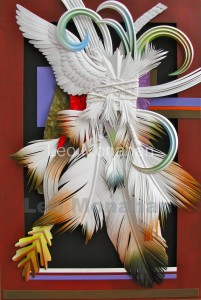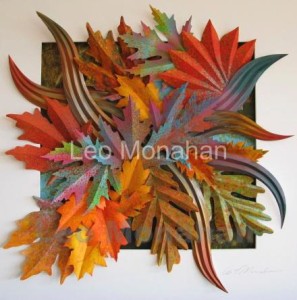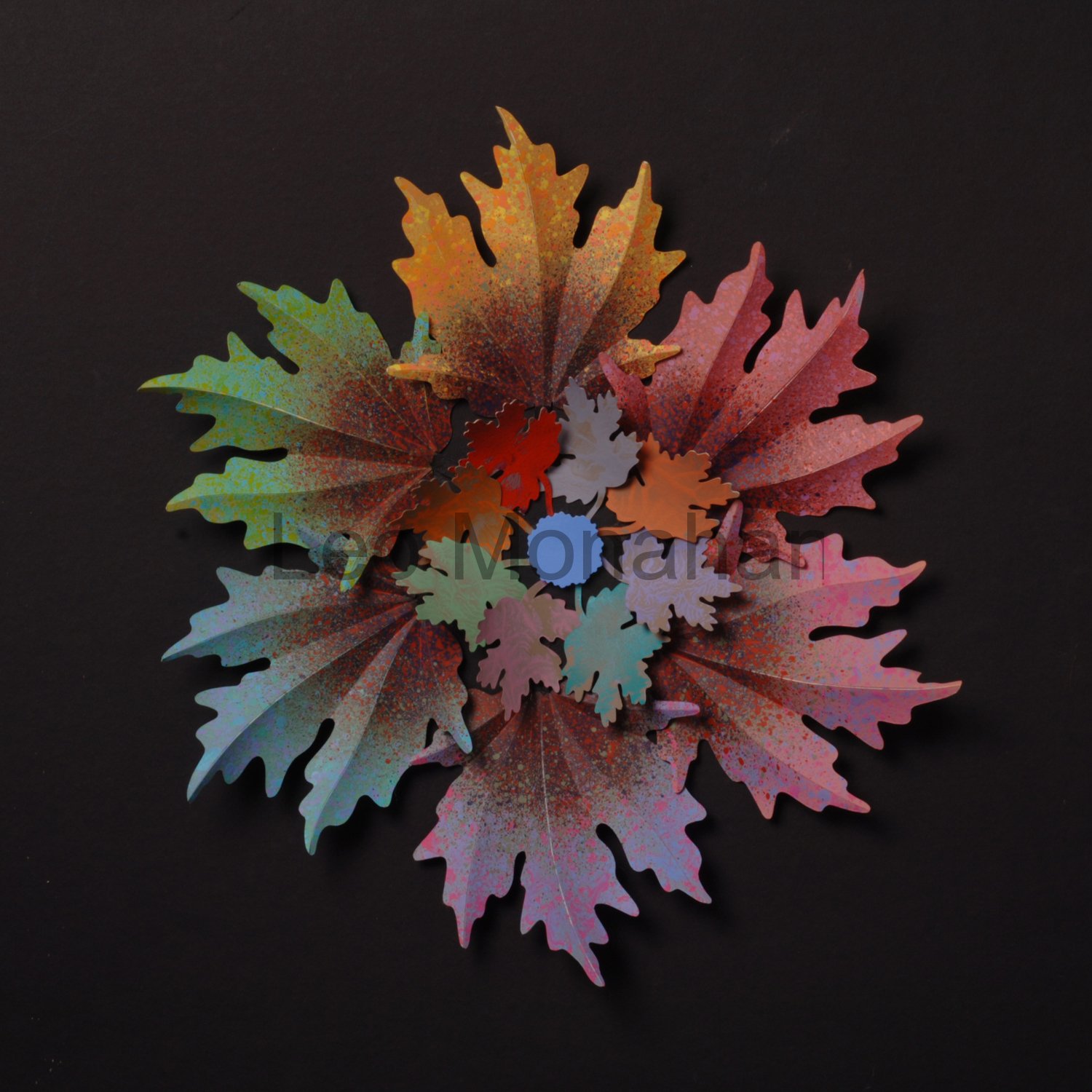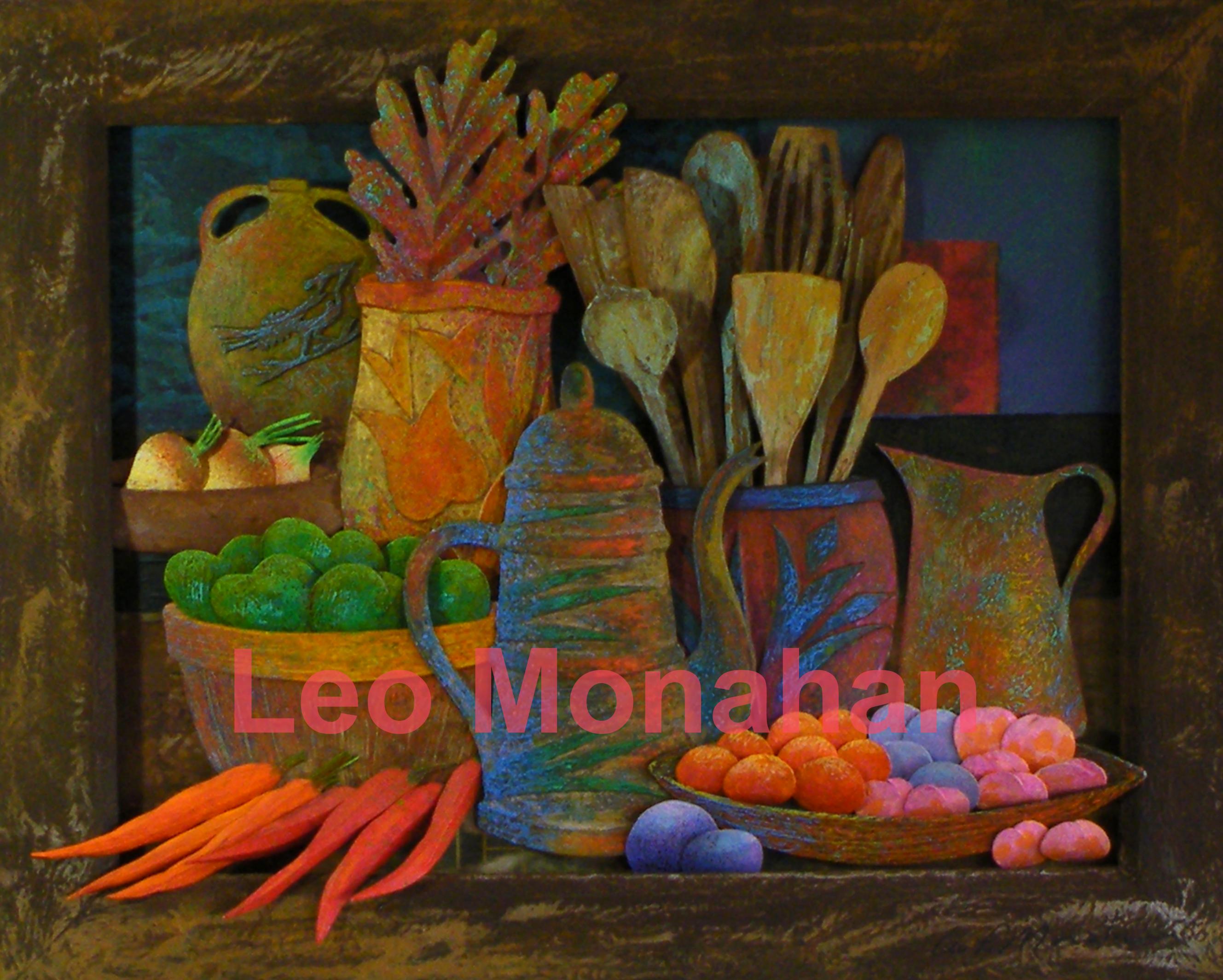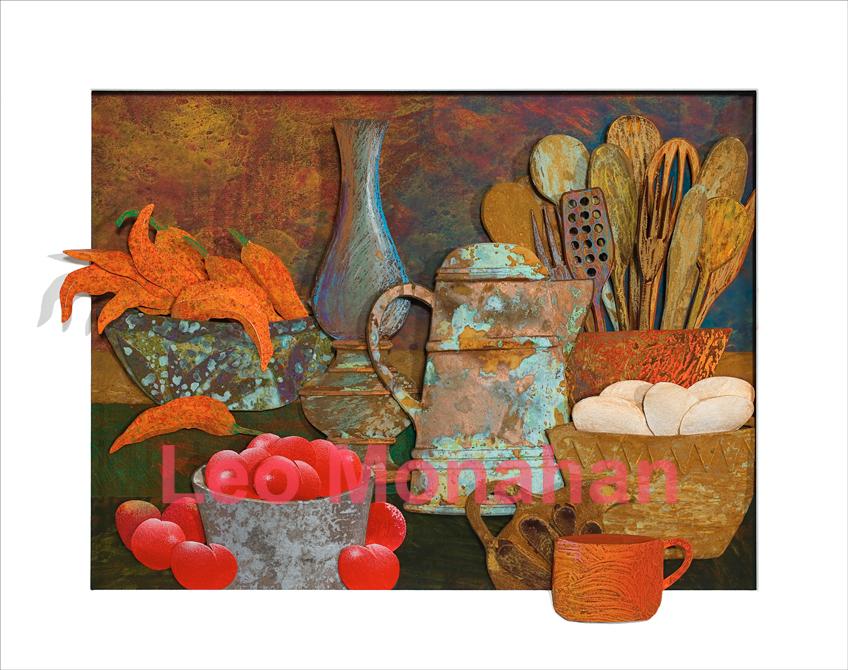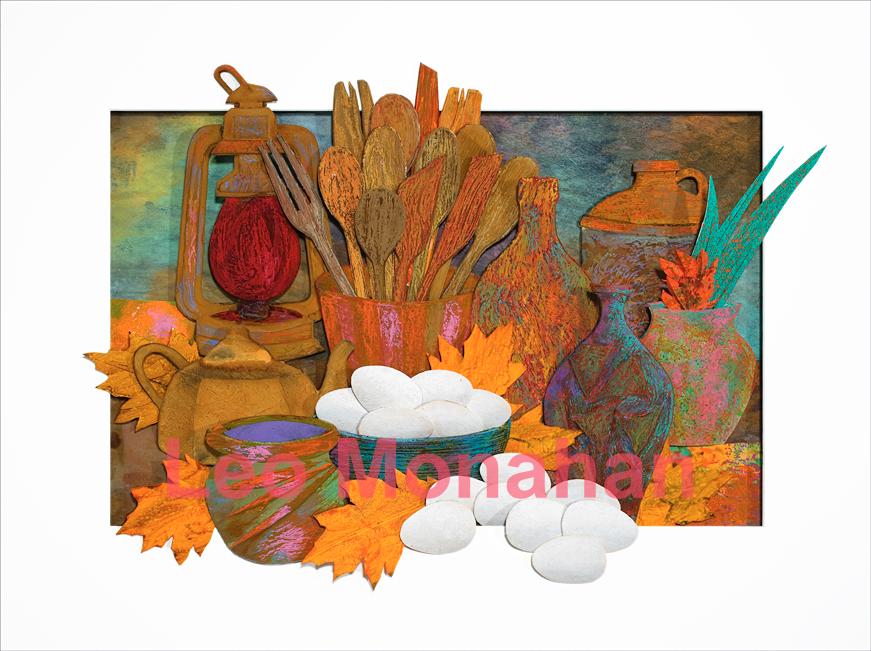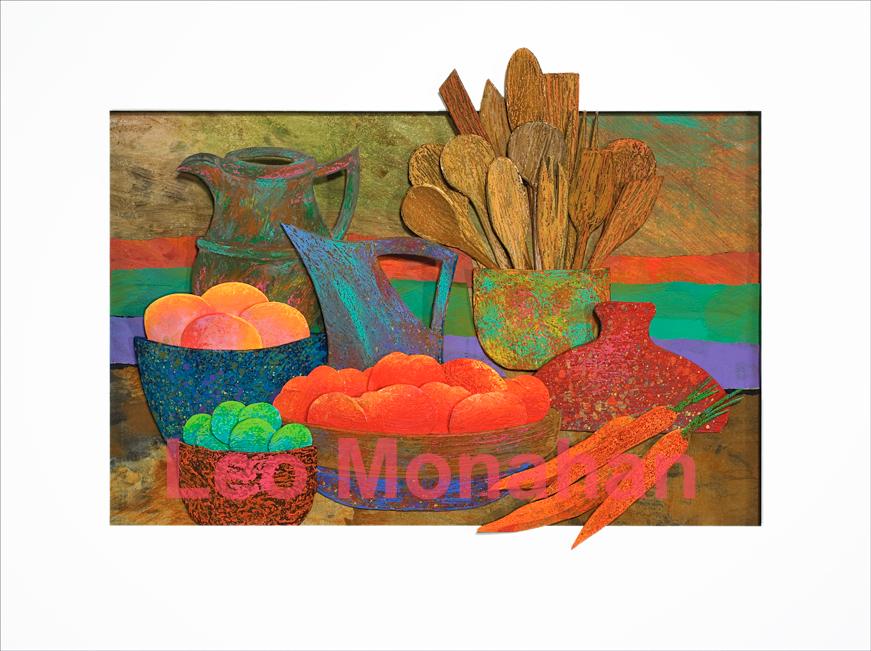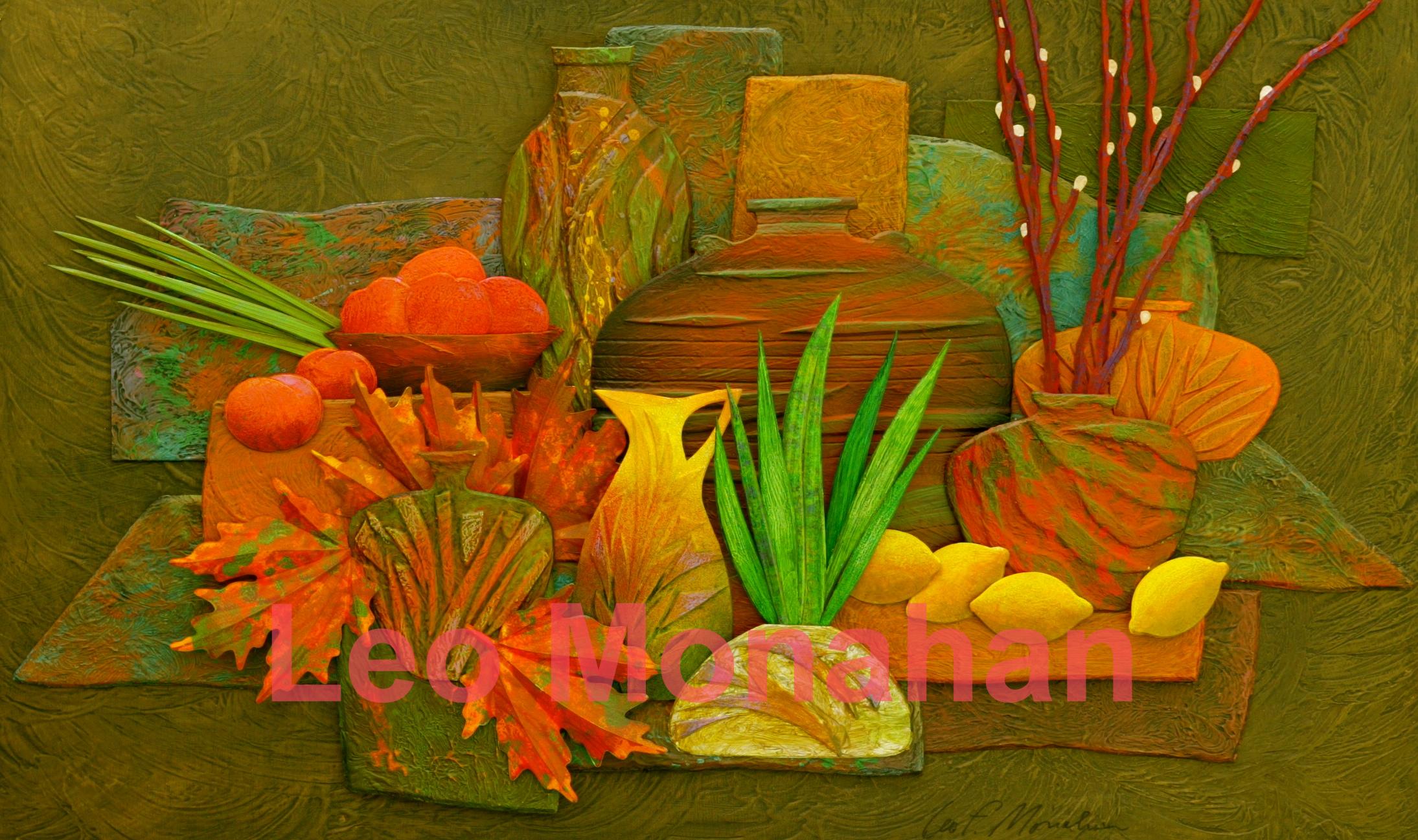When I started making bundles they were based on a loose, uneducated, shallow, interpretation of Sioux medicine bundles that were mentioned to me by my Sioux mentor, Ben Black Elk. Everything he said impressed me. I was in my early teens when he lived in Keystone just across the creek from us during the summers and posed for tourists at Mount Rushmore.
I’ve done many bundles since 1985 when I introduced them at the Peppertree Ranch show, in the Santa Ynez Valley, north of my home in Los Angeles. Now they only relate to Medicine Bundles because in the primitive years they were the impetus. I describe them in many ways now, wraps, bunches, assemblies, packages, groupings, batches, collections, accumulations, and sometimes, they’re … well, bundles.
I make inventories of paper sculpture versions of feathers, leaves, horns, weavings, insects, plants, symbols, and many other elements that are cut, manipulated, painted, and put away in pizza boxes for future use. I draw upon these inventories when attempting to assemble something.
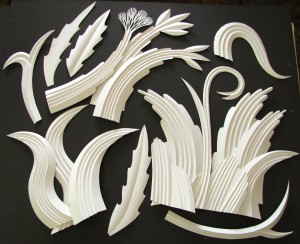
These are some of the contents of one of the pizza boxes before brushing off the crumbs and painting.
They become collage in dimension without much attention to content or reality. In Butterfly Bundle, are the wings enormous or is the bundle very tiny on normal size butterfly wings? Who cares, not me. I collage elements because they fit, seem right, make a statement, or complete an idea. And, remember, at my age, it has to be fun or funny…
I never know how to title a piece of art. In the early 60s I went to a gallery opening on La Cienega Blvd. on a Friday night art walk. Richard Rubens, a great painting instructor at The Chouinard Art Institute was showing, and one of the works was titled, “In back of beyond.” I was so impressed, and don’t think I have ever reached that level of clever obscurity. I have tried. Oh man how I’ve tried. The bundle pictured above is called, “Good Fortune.”
Maybe I should have titled this, “The Underbelly of Autumn”. Instead it’s called, “Autumn Bundle.” My titles are so prosaic, you would think I’m trying to sell the stuff off of a chain link fence.
Here for your musical enjoyment are a number of badly titled bundles that shall remain title-free in this post. I’ll be your entertainer here for the unforeseeable future and I’ll come back when I can’t stay so long. Don’t forget to tip your waitress. Good evening.
At this time I want to thank the many friends who save their pizza boxes for me for without them there would be no filing system and more paper all over the place.
Thanks for visiting me …
leo
P.S. My work is at the Grovewood Gallery in Asheville, NC. Also, I will soon have new work in the Asheville Airport Gallery.

